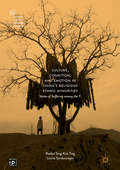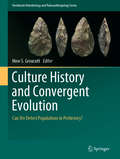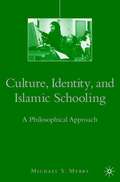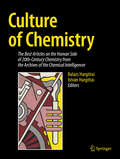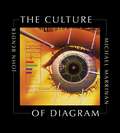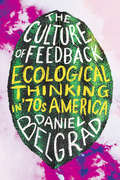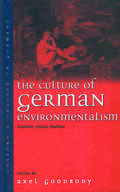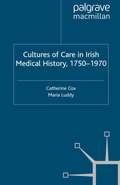- Table View
- List View
Culture, Cognition, and Emotion in China's Religious Ethnic Minorities: Voices of Suffering among the Yi
by Rachel Sing-Kiat Ting Louise SundararajanThis study examines the suffering narratives of two religious communities—Bimo and Christian—of the Yi minority who reside in the remote mountains of Sichuan and Yunnan, China, respectively. It is informed by the theoretical framework of ecological rationality, which posits that emotions influence, and are influenced, by cognitive styles that have co-evolved with the ecological niche of a culture. It was predicted and found that in times of adversity, traditional religious communities may differ in emotion expression, causal attribution, and help seeking behavior, with far-reaching ramifications in how they are uniquely vulnerable to the pitfalls of modernization. The authors hope that the voices of the study participants, heard through their harrowing narratives, may inspire a deepened sensitivity to the plight of rural Chinese communities as China races to become superpower in the global economy.
Culture, Cognition, and Emotion in China's Religious Ethnic Minorities: Voices of Suffering among the Yi
by Louise Sundararajan Rachel Sing-Kiat TingThis study examines the suffering narratives of two religious communities—Bimo and Christian—of the Yi minority who reside in the remote mountains of Sichuan and Yunnan, China, respectively. It is informed by the theoretical framework of ecological rationality, which posits that emotions influence, and are influenced, by cognitive styles that have co-evolved with the ecological niche of a culture. It was predicted and found that in times of adversity, traditional religious communities may differ in emotion expression, causal attribution, and help seeking behavior, with far-reaching ramifications in how they are uniquely vulnerable to the pitfalls of modernization. The authors hope that the voices of the study participants, heard through their harrowing narratives, may inspire a deepened sensitivity to the plight of rural Chinese communities as China races to become superpower in the global economy.
Culture History and Convergent Evolution: Can We Detect Populations in Prehistory? (Vertebrate Paleobiology and Paleoanthropology)
by Huw S. GroucuttThis volume brings together diverse contributions from leading archaeologists and paleoanthropologists, covering various spatial and temporal periods to distinguish convergent evolution from cultural transmission in order to see if we can discover ancient human populations. With a focus on lithic technology, the book analyzes ancient materials and cultures to systematically explore the theoretical and physical aspects of culture, convergence, and populations in human evolution and prehistory. The book will be of interest to academics, students and researchers in archaeology, paleoanthropology, genetics, and paleontology. The book begins by addressing early prehistory, discussing the convergent evolution of behaviors and the diverse ecological conditions driving the success of different evolutionary paths. Chapters discuss these topics and technology in the context of the Lower Paleolithic/Earlier Stone age and Middle Paleolithic/Middle Stone Age. The book then moves towards a focus on the prehistory of our species over the last 40,000 years. Topics covered include the human evolutionary and dispersal consequences of the Middle-Upper Paleolithic Transition in Western Eurasia. Readers will also learn about the cultural convergences, and divergences, that occurred during the Terminal Pleistocene and Holocene, such as the budding of human societies in the Americas. The book concludes by integrating these various perspectives and theories, and explores different methods of analysis to link technological developments and cultural convergence.
Culture, Identity, and Islamic Schooling: A Philosophical Approach
by M. MerryIn light of the growing phenomenon of Islamic schools in the United States and Europe, this compelling study outlines whether these schools share similar traits with other religious schools, while posing new challenges to education policy. Merry elaborates an ideal type of islamic philosophy of education in order to examine the specific challenges that Islamic schools face, comparing the different educational realities facing Muslim Populations in the Netherlands, Belgium, and the United States.
Culture Negative Orthopedic Biofilm Infections (Springer Series on Biofilms #7)
by Garth D. Ehrlich, Patrick J. DeMeo, J. William Costerton and Heinz WinklerDuring the recent transition between acute diseases caused by swarms of single planktonic bacteria, and chronic infections caused by bacteria growing in slime-enclosed biofilms, a general clinical consensus has emerged that pathologies with bacterial etiologies are frequently culture negative. Because biofilm infections now affect 17 million Americans per year (killing approximately 450,000), the suggestion that these common and lethal infections regularly go unnoticed by the only FDA-approved method for their detection and characterization is a matter of urgent concern. Biologically, we would expect that planktonic bacterial cells would colonize any new surface, including the surface of an agar plate, while the specialized sessile cells of a biofilm community would have no such proclivity. In the study of biofilm diseases ranging from otitis media to prostatitis, it was found that direct microscopy and DNA- and RNA-based molecular methods regularly document the presence of living bacteria in tissues and samples that are culture negative. The editors selected orthopedic biofilm infections as the subject of this book because these infections occur against a background of microbiological sterility in which modern molecular methods would be expected to find bacterial DNA, RNA-based microscopic methods would be expected to locate bacterial cells, and cultures would be negative. Moreover, in Orthopedics we find an already biofilm-adapted surgical group in which current strategies are based on the meticulous removal of compromised tissues, antibiotic options as based on high biofilm-killing local doses, and there are practical bedside strategies for dealing with biofilm infections. So here is where the new paradigm of biofilm infection meets the equally new paradigm of the culture negativity of biofilms, and this volume presents a conceptual synthesis that may soon combine the most effective molecular methods for the detection and identification of bacteria with a surgical discipline that is ready to help patients.
Culture of Animal Cells: A Manual of Basic Technique and Specialized Applications
by R. Ian FreshneySince the publication of the sixth edition of this benchmark text, numerous advances in the field have been made – particularly in stem cells, 3D culture, scale-up, STR profiling, and culture of specialized cells. Culture of Animal Cells: A Manual of Basic Technique and Specialized Applications, Seventh Edition is the updated version of this benchmark text, addressing these recent developments in the field as well as the basic skills and protocols. This eagerly awaited edition reviews the increasing diversity of the applications of cell culture and the proliferation of specialized techniques, and provides an introduction to new subtopics in mini-reviews. New features also include a new chapter on cell line authentication with a review of the major issues and appropriate protocols including DNA profiling and barcoding, as well as some new specialized protocols. Because of the continuing expansion of cell culture, and to keep the bulk of the book to a reasonable size, some specialized protocols are presented as supplementary material online. Culture of Animal Cells: A Manual of Basic Technique and Specialized Applications, Seventh Edition provides the most accessible and comprehensive introduction available to the culture and experimental manipulation of animal cells. This text is an indispensable resource for those in or entering the field, including academic research scientists, clinical and biopharmaceutical researchers, undergraduate and graduate students, cell and molecular biology and genetics lab managers, trainees and technicians.
Culture of Animal Cells: A Manual of Basic Technique and Specialized Applications
by R. Ian FreshneySince the publication of the sixth edition of this benchmark text, numerous advances in the field have been made – particularly in stem cells, 3D culture, scale-up, STR profiling, and culture of specialized cells. Culture of Animal Cells: A Manual of Basic Technique and Specialized Applications, Seventh Edition is the updated version of this benchmark text, addressing these recent developments in the field as well as the basic skills and protocols. This eagerly awaited edition reviews the increasing diversity of the applications of cell culture and the proliferation of specialized techniques, and provides an introduction to new subtopics in mini-reviews. New features also include a new chapter on cell line authentication with a review of the major issues and appropriate protocols including DNA profiling and barcoding, as well as some new specialized protocols. Because of the continuing expansion of cell culture, and to keep the bulk of the book to a reasonable size, some specialized protocols are presented as supplementary material online. Culture of Animal Cells: A Manual of Basic Technique and Specialized Applications, Seventh Edition provides the most accessible and comprehensive introduction available to the culture and experimental manipulation of animal cells. This text is an indispensable resource for those in or entering the field, including academic research scientists, clinical and biopharmaceutical researchers, undergraduate and graduate students, cell and molecular biology and genetics lab managers, trainees and technicians.
Culture of Cells for Tissue Engineering (Culture of Specialized Cells #7)
by Gordana Vunjak-Novakovic R. Ian FreshneyStep-by-step, practical guidance for the acquisition, manipulation, and use of cell sources for tissue engineering Tissue engineering is a multidisciplinary field incorporating the principles of biology, chemistry, engineering, and medicine to create biological substitutes of native tissues for scientific research or clinical use. Specific applications of this technology include studies of tissue development and function, investigating drug response, and tissue repair and replacement. This area is rapidly becoming one of the most promising treatment options for patients suffering from tissue failure. Written by leading experts in the field, Culture of Cells for Tissue Engineering offers step-by-step, practical guidance for the acquisition, manipulation, and use of cell sources for tissue engineering. It offers a unique focus on tissue engineering methods for cell sourcing and utilization, combining theoretical overviews and detailed procedures. Features of the text include: Easy-to-use format with a two-part organization Logically organized—part one discusses cell sourcing, preparation, and characterization and the second part examines specific engineered tissues Each chapter covers: structural and functional properties of tissues, methodological principles, culture, cell selection/expansion, cell modifications, cell seeding, tissue culture, analytical assays, and a detailed description of representative studies End-of-chapter features include useful listings of sources for reagents, materials, and supplies, with the contact details of the suppliers listed at the end of the book A section of elegant color plates to back up the figures in the chapters Culture of Cells for Tissue Engineering gives novice and seasoned researchers in tissue engineering an invaluable resource. In addition, the text is suitable for professionals in related research, particularly in those areas where cell and tissue culture is a new or emerging tool.
Culture of Chemistry: The Best Articles on the Human Side of 20th-Century Chemistry from the Archives of the Chemical Intelligencer
by Balazs Hargittai István HargittaiIncludes specially selected articles that previously appeared in The Chemical Intelligencer magazine published (1995-2000). Excerpts of these Editor's choice chapters chronicle the culture and history of chemistry, featuring great chemists and discoverers. Contributors from among the best-known authors of the chemistry community, including numerous Nobel laureates. Features behind the scenes stories about pivotal discoveries, intricacies of laboratory life and interactions among scientists, favorite recipes of renowned researchers, life histories and anecdotes. Chapters detail the human side of science but also present scientific information communicated in an easy-to-perceive and entertaining way. This unique book is not only aimed at chemists but individuals who are interested in the cultural aspects of our science.
A culture of curiosity: Science in the eighteenth-century home
by Leonie HannanThis study explores the practice of scientific enquiry as it took place in the eighteenth-century home. While histories of science have identified the genteel household as an important site for scientific experiment, they have tended to do so via biographies of important men of science. Using a wide range of historical source material, from household accounts and inventories to letters and print culture, this book investigates the tools within reach of early modern householders in their search for knowledge. It considers the under-explored question of the home as a site of knowledge production and does so by viewing scientific enquiry as one of many interrelated domestic practices. It shows that knowledge production and consumption were necessary facets of domestic life and that the eighteenth-century home generated practices that were integral to ‘Enlightenment’ enquiry.An electronic edition of this book is freely available under a Creative Commons (CC BY-NC-ND) licence.
A culture of curiosity: Science in the eighteenth-century home
by Leonie HannanThis study explores the practice of scientific enquiry as it took place in the eighteenth-century home. While histories of science have identified the genteel household as an important site for scientific experiment, they have tended to do so via biographies of important men of science. Using a wide range of historical source material, from household accounts and inventories to letters and print culture, this book investigates the tools within reach of early modern householders in their search for knowledge. It considers the under-explored question of the home as a site of knowledge production and does so by viewing scientific enquiry as one of many interrelated domestic practices. It shows that knowledge production and consumption were necessary facets of domestic life and that the eighteenth-century home generated practices that were integral to ‘Enlightenment’ enquiry.An electronic edition of this book is freely available under a Creative Commons (CC BY-NC-ND) licence.
The Culture of Diagram
by John Bender Michael MarrinanThe Culture of Diagram is about visual thinking. Exploring a terrain where words meet pictures and formulas meet figures, the book foregrounds diagrams as tools for blurring those boundaries to focus on the production of knowledge as process. It outlines a history of convergence among diverse streams of data in real-time: from eighteenth-century print media and the diagrammatic procedures in the pages of Diderot's Encyclopedia to the paintings of Jacques-Louis David and mathematical devices that reveal the unseen worlds of quantum physics. Central to the story is the process of correlation, which invites observers to participate by eliciting leaps of imagination to fill gaps in data, equations, or sensations. This book traces practices that ran against the grain of both Locke's clear and distinct ideas and Newton's causality—practices greatly expanded by the calculus, probabilities, and protocols of data sampling. Today's digital technologies are rooted in the ability of high-speed computers to correct errors when returning binary data to the human sensorium. High-tech diagrams echo the visual structures of the Encyclopedia, arraying packets of dissimilar data across digital spaces instead of white paper. The culture of diagram broke with the certainties of eighteenth-century science to expand the range of human experience. Speaking across disciplines and discourses, Bender and Marrinan situate our modernity in a new and revealing light.
The Culture of Feedback: Ecological Thinking in Seventies America
by Daniel BelgradWhen we want advice from others, we often casually speak of “getting some feedback.” But how many of us give a thought to what this phrase means? The idea of feedback actually dates to World War II, when the term was developed to describe the dynamics of self-regulating systems, which correct their actions by feeding their effects back into themselves. By the early 1970s, feedback had become the governing trope for a counterculture that was reoriented and reinvigorated by ecological thinking. The Culture of Feedback digs deep into a dazzling variety of left-of-center experiences and attitudes from this misunderstood period, bringing us a new look at the wild side of the 1970s. Belgrad shows us how ideas from systems theory were taken up by the counterculture and the environmental movement, eventually influencing a wide range of beliefs and behaviors, particularly related to the question of what is and is not intelligence. He tells the story of a generation of Americans who were struck by a newfound interest in—and respect for—plants, animals, indigenous populations, and the very sounds around them, threading his tapestry with cogent insights on environmentalism, feminism, systems theory, and psychedelics. The Culture of Feedback repaints the familiar image of the ’70s as a time of Me Generation malaise to reveal an era of revolutionary and hopeful social currents, driven by desires to radically improve—and feed back into—the systems that had come before.
The Culture of Feedback: Ecological Thinking in Seventies America
by Daniel BelgradWhen we want advice from others, we often casually speak of “getting some feedback.” But how many of us give a thought to what this phrase means? The idea of feedback actually dates to World War II, when the term was developed to describe the dynamics of self-regulating systems, which correct their actions by feeding their effects back into themselves. By the early 1970s, feedback had become the governing trope for a counterculture that was reoriented and reinvigorated by ecological thinking. The Culture of Feedback digs deep into a dazzling variety of left-of-center experiences and attitudes from this misunderstood period, bringing us a new look at the wild side of the 1970s. Belgrad shows us how ideas from systems theory were taken up by the counterculture and the environmental movement, eventually influencing a wide range of beliefs and behaviors, particularly related to the question of what is and is not intelligence. He tells the story of a generation of Americans who were struck by a newfound interest in—and respect for—plants, animals, indigenous populations, and the very sounds around them, threading his tapestry with cogent insights on environmentalism, feminism, systems theory, and psychedelics. The Culture of Feedback repaints the familiar image of the ’70s as a time of Me Generation malaise to reveal an era of revolutionary and hopeful social currents, driven by desires to radically improve—and feed back into—the systems that had come before.
The Culture of Feedback: Ecological Thinking in Seventies America
by Daniel BelgradWhen we want advice from others, we often casually speak of “getting some feedback.” But how many of us give a thought to what this phrase means? The idea of feedback actually dates to World War II, when the term was developed to describe the dynamics of self-regulating systems, which correct their actions by feeding their effects back into themselves. By the early 1970s, feedback had become the governing trope for a counterculture that was reoriented and reinvigorated by ecological thinking. The Culture of Feedback digs deep into a dazzling variety of left-of-center experiences and attitudes from this misunderstood period, bringing us a new look at the wild side of the 1970s. Belgrad shows us how ideas from systems theory were taken up by the counterculture and the environmental movement, eventually influencing a wide range of beliefs and behaviors, particularly related to the question of what is and is not intelligence. He tells the story of a generation of Americans who were struck by a newfound interest in—and respect for—plants, animals, indigenous populations, and the very sounds around them, threading his tapestry with cogent insights on environmentalism, feminism, systems theory, and psychedelics. The Culture of Feedback repaints the familiar image of the ’70s as a time of Me Generation malaise to reveal an era of revolutionary and hopeful social currents, driven by desires to radically improve—and feed back into—the systems that had come before.
The Culture of Feedback: Ecological Thinking in Seventies America
by Daniel BelgradWhen we want advice from others, we often casually speak of “getting some feedback.” But how many of us give a thought to what this phrase means? The idea of feedback actually dates to World War II, when the term was developed to describe the dynamics of self-regulating systems, which correct their actions by feeding their effects back into themselves. By the early 1970s, feedback had become the governing trope for a counterculture that was reoriented and reinvigorated by ecological thinking. The Culture of Feedback digs deep into a dazzling variety of left-of-center experiences and attitudes from this misunderstood period, bringing us a new look at the wild side of the 1970s. Belgrad shows us how ideas from systems theory were taken up by the counterculture and the environmental movement, eventually influencing a wide range of beliefs and behaviors, particularly related to the question of what is and is not intelligence. He tells the story of a generation of Americans who were struck by a newfound interest in—and respect for—plants, animals, indigenous populations, and the very sounds around them, threading his tapestry with cogent insights on environmentalism, feminism, systems theory, and psychedelics. The Culture of Feedback repaints the familiar image of the ’70s as a time of Me Generation malaise to reveal an era of revolutionary and hopeful social currents, driven by desires to radically improve—and feed back into—the systems that had come before.
The Culture of Feedback: Ecological Thinking in Seventies America
by Daniel BelgradWhen we want advice from others, we often casually speak of “getting some feedback.” But how many of us give a thought to what this phrase means? The idea of feedback actually dates to World War II, when the term was developed to describe the dynamics of self-regulating systems, which correct their actions by feeding their effects back into themselves. By the early 1970s, feedback had become the governing trope for a counterculture that was reoriented and reinvigorated by ecological thinking. The Culture of Feedback digs deep into a dazzling variety of left-of-center experiences and attitudes from this misunderstood period, bringing us a new look at the wild side of the 1970s. Belgrad shows us how ideas from systems theory were taken up by the counterculture and the environmental movement, eventually influencing a wide range of beliefs and behaviors, particularly related to the question of what is and is not intelligence. He tells the story of a generation of Americans who were struck by a newfound interest in—and respect for—plants, animals, indigenous populations, and the very sounds around them, threading his tapestry with cogent insights on environmentalism, feminism, systems theory, and psychedelics. The Culture of Feedback repaints the familiar image of the ’70s as a time of Me Generation malaise to reveal an era of revolutionary and hopeful social currents, driven by desires to radically improve—and feed back into—the systems that had come before.
The Culture of Feedback: Ecological Thinking in Seventies America
by Daniel BelgradWhen we want advice from others, we often casually speak of “getting some feedback.” But how many of us give a thought to what this phrase means? The idea of feedback actually dates to World War II, when the term was developed to describe the dynamics of self-regulating systems, which correct their actions by feeding their effects back into themselves. By the early 1970s, feedback had become the governing trope for a counterculture that was reoriented and reinvigorated by ecological thinking. The Culture of Feedback digs deep into a dazzling variety of left-of-center experiences and attitudes from this misunderstood period, bringing us a new look at the wild side of the 1970s. Belgrad shows us how ideas from systems theory were taken up by the counterculture and the environmental movement, eventually influencing a wide range of beliefs and behaviors, particularly related to the question of what is and is not intelligence. He tells the story of a generation of Americans who were struck by a newfound interest in—and respect for—plants, animals, indigenous populations, and the very sounds around them, threading his tapestry with cogent insights on environmentalism, feminism, systems theory, and psychedelics. The Culture of Feedback repaints the familiar image of the ’70s as a time of Me Generation malaise to reveal an era of revolutionary and hopeful social currents, driven by desires to radically improve—and feed back into—the systems that had come before.
The Culture of German Environmentalism: Anxieties, Visions, Realities (Culture & Society in Germany #5)
by Axel GoodbodyThough much has been written about the Green Party in Germany, less is known about the changes in individuals' attitudes towards the environment that led to the rise of environmental movement, or of its cultural roots. This volume draws attention to the breadth of environmentalism in contemporary Germany and its significance for German political culture by focusing on the treatment of "green" issues in literature, the media and film, against the background of Green politics and the environmental movement. The volume includes an interview with Carl Amery, the Bavarian Green and science fiction writer, a short text by him and an account of his activities as writer and campaigner.
Culture of Human Stem Cells (Culture of Specialized Cells #12)
by R. Ian Freshney Glyn N. Stacey Jonathan M. AuerbachThis book collects the most effective and cutting-edge methods and protocols for deriving and culturing human embryonic and adult stem cells—in one handy resource. This groundbreaking book follows the tradition of previous books in the Culture of Specialized Cells Series—each methods and protocols chapter is laid out exactly like the next, with stepwise protocols, preceded by specific requirements for that protocol, and a concise discussion of methods illustrated by data. The editors describe a limited number of representative techniques across a wide spectrum of stem cells from embryonic, newborn, and adult tissue, yielding an all-encompassing and versatile guide to the field of stem cell biology and culture. The book includes a comprehensive list of suppliers for all equipment used in the protocols presented, with websites available in an appendix. Additionally, there is a chapter on quality control, and other chapters covering legal and ethical issues, cryopreservation, and feeder layer culture. This text is a one-stop resource for all researchers, clinical scientists, teachers, and students involved in this crucial area of study.
Culture of Human Tumor Cells (Culture of Specialized Cells #9)
by R. Ian Freshney Roswitha PfragnerThis comprehensive resource provides stepwise protocols for the in vitro cultivation of the major types of human tumors. Written in a reader-friendly style, this book is organized by specific tumor, discussing cultures for lung, gastric, colorectal, pancreas, bladder, prostate, ovary, cervix, mammary carcinoma, myoepithelium, squamous, melanoma, lymphoma, glioma, and neuroendocrine tumors. Detailed techniques for initiation, propagation, and characterization of established cell lines are presented. Drug treatment, selection, differentiation, assays for malignant cells, risks, and applications are discussed. An extensive listing of vendors for equipment and other cell culture products is also included.
Culture of Marine Invertebrate Animals: Proceedings — 1st Conference on Culture of Marine Invertebrate Animals Greenport
by Matoira H. Chanley Walter L. SmithThis volume is based on prec'entations at the conference on Culture of Marine Invertebrate Animals which was held in Green port, New York in October, 1972. The conference was sponsored by the Middle Atlantic Natural Sciences Council, Inc., a non profit educational corporation, together with the Marine Science Centers of Adelphi University, the State University of New York at Stony Brook, Long Island University, Suffolk County Community College, and the Shelter Island Oyster Company. The purpose of the conference was to provide a needed ex change of knowledge among scientists of various specialties whose information would be invaluable to others confronted with similar problems, even with different marine animals. Part I considers supportive techniques -- general isolation and culture methods, problems of disease and feeding. Specific techniques employed in the culture of a wide range of invertebrate organisms is covered in Part II. We want to thank the contributors for their cooperation in preparing the manuscripts based on their conference presentations. Walter L. Smith Matoira H. Chanley v Contents PART I Recirculating System Culture Methods for Marine Organisms .............•.
The Culture of Nature in the History of Design
by Kjetil FallanThe Culture of Nature in the History of Design confronts the dilemma caused by design’s pertinent yet precarious position in environmental discourse through interdisciplinary conversations about the design of nature and the nature of design. Demonstrating that the deep entanglements of design and nature have a deeper and broader history than contemporary discourse on sustainable design and ecological design might imply, this book presents case studies ranging from the eighteenth to the twenty-first century and from Singapore to Mexico. It gathers scholarship on a broad range of fields/practices, from urban planning, landscape architecture, and architecture, to engineering design, industrial design, furniture design and graphic design. From adobe architecture to the atomic bomb, from the bonsai tree to Biosphere 2, from pesticides to photovoltaics, from rust to recycling – the culture of nature permeates the history of design. As an activity and a profession always operating in the borderlands between human and non-human environments, design has always been part of the environmental problem, whilst also being an indispensable part of the solution. The book ventures into domains as diverse as design theory, research, pedagogy, politics, activism, organizations, exhibitions, and fiction and trade literature to explore how design is constantly making and unmaking the environment and, conversely, how the environment is both making and unmaking design. This book will be of great interest to a range of scholarly fields, from design education and design history to environmental policy and environmental history.
The Culture of Nature in the History of Design
by Kjetil FallanThe Culture of Nature in the History of Design confronts the dilemma caused by design’s pertinent yet precarious position in environmental discourse through interdisciplinary conversations about the design of nature and the nature of design. Demonstrating that the deep entanglements of design and nature have a deeper and broader history than contemporary discourse on sustainable design and ecological design might imply, this book presents case studies ranging from the eighteenth to the twenty-first century and from Singapore to Mexico. It gathers scholarship on a broad range of fields/practices, from urban planning, landscape architecture, and architecture, to engineering design, industrial design, furniture design and graphic design. From adobe architecture to the atomic bomb, from the bonsai tree to Biosphere 2, from pesticides to photovoltaics, from rust to recycling – the culture of nature permeates the history of design. As an activity and a profession always operating in the borderlands between human and non-human environments, design has always been part of the environmental problem, whilst also being an indispensable part of the solution. The book ventures into domains as diverse as design theory, research, pedagogy, politics, activism, organizations, exhibitions, and fiction and trade literature to explore how design is constantly making and unmaking the environment and, conversely, how the environment is both making and unmaking design. This book will be of great interest to a range of scholarly fields, from design education and design history to environmental policy and environmental history.
Cultures of Care in Irish Medical History, 1750-1970
by Catherine Cox and Maria LuddyExploring aspects of Irish medical history, from the nature and proposed remedies for various illnesses in eighteenth century Ireland, to the treatment of influenza in twentieth-century Ireland, this book shows how the cultures of medical care evolved over three centuries.
